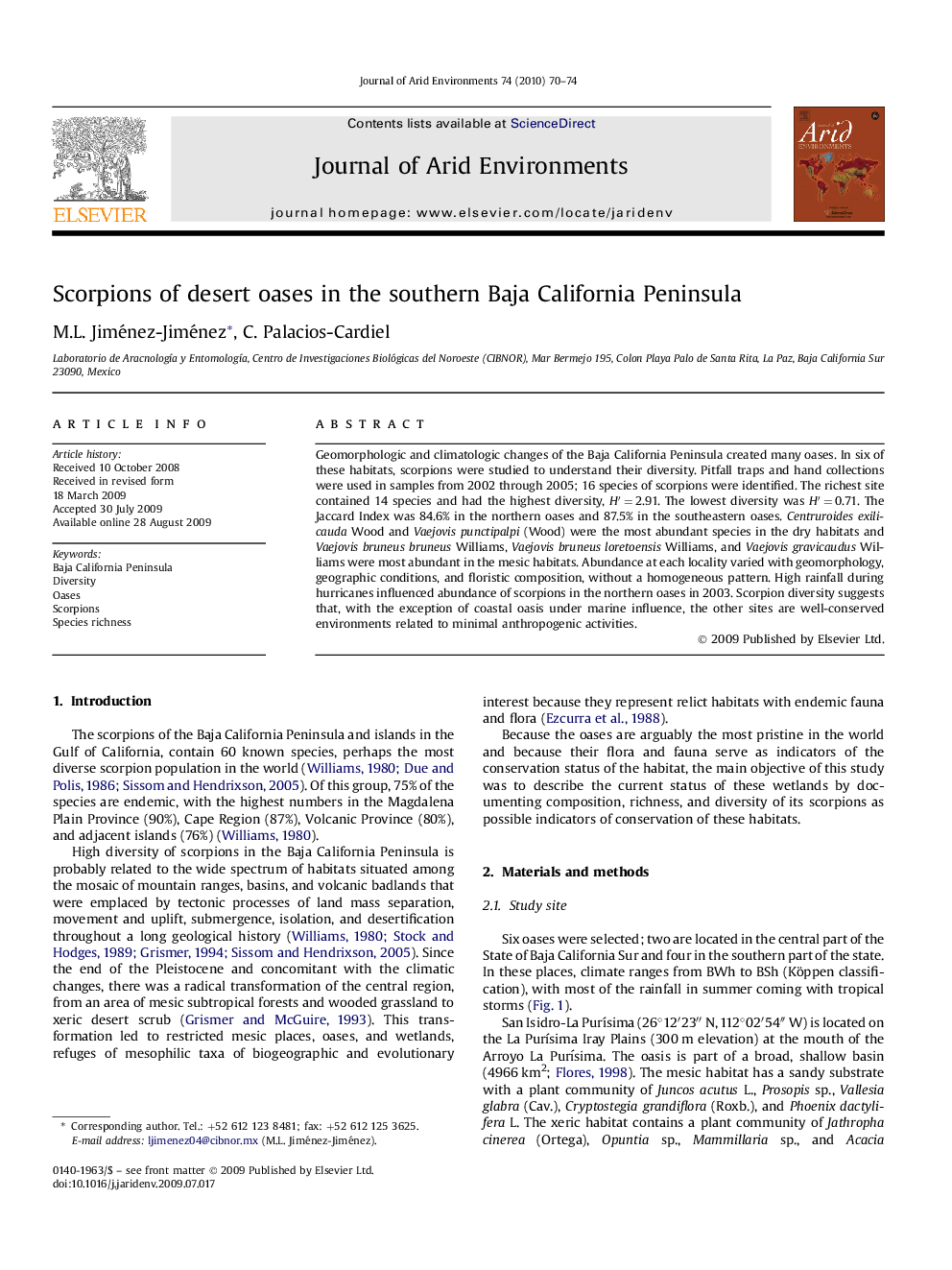| Article ID | Journal | Published Year | Pages | File Type |
|---|---|---|---|---|
| 4394342 | Journal of Arid Environments | 2010 | 5 Pages |
Abstract
Geomorphologic and climatologic changes of the Baja California Peninsula created many oases. In six of these habitats, scorpions were studied to understand their diversity. Pitfall traps and hand collections were used in samples from 2002 through 2005; 16 species of scorpions were identified. The richest site contained 14 species and had the highest diversity, Hâ²Â = 2.91. The lowest diversity was Hâ²Â = 0.71. The Jaccard Index was 84.6% in the northern oases and 87.5% in the southeastern oases. Centruroides exilicauda Wood and Vaejovis punctipalpi (Wood) were the most abundant species in the dry habitats and Vaejovis bruneus bruneus Williams, Vaejovis bruneus loretoensis Williams, and Vaejovis gravicaudus Williams were most abundant in the mesic habitats. Abundance at each locality varied with geomorphology, geographic conditions, and floristic composition, without a homogeneous pattern. High rainfall during hurricanes influenced abundance of scorpions in the northern oases in 2003. Scorpion diversity suggests that, with the exception of coastal oasis under marine influence, the other sites are well-conserved environments related to minimal anthropogenic activities.
Related Topics
Physical Sciences and Engineering
Earth and Planetary Sciences
Earth-Surface Processes
Authors
M.L. Jiménez-Jiménez, C. Palacios-Cardiel,
